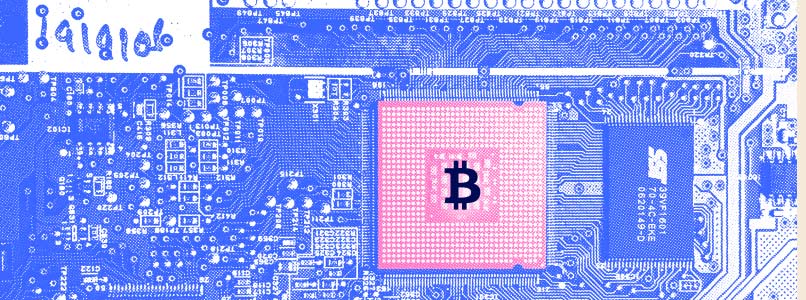BTC Mining: The History of Its Development
BTC mining goes back to 2009, when the first block was mined in the Bitcoin network. The reward was 50 BTC at the time. BTC mining started from using CPU power. However, as the network evolved, CPUs were no longer enough to effectively mine cryptocurrencies due to the increasing complexity of the computing processes.
In 2010, graphics processing units (GPUs) began to be used for mining. The active use of a processor and a video card increased the hash rate. As early as 2011, some users started to build GPU farms with multiple graphics cards to mine more productively. This minimized the loss of mining efficiency with increasing complexity and further improved the hash rate.
The use of field-programmable gate arrays (FPGAs) for BTC mining was the shortest compared to other methods. The devices cost 1.5 times more than video cards and could not be resold after use. As a result, they were an unpopular solution that was only relevant for one to two years. Despite their low power consumption and high hash rate, they didn’t come into widespread use.
The first ASIC mining devices appeared in 2012, which changed the entire industry by enabling a qualitatively different level of hash rate. Such devices are focused on a single task, meaning they are incredibly efficient.
In 2011, miners gradually began to expand mining and joined together to form mining pools. Beginning in 2018, the capacity of even a small farm was not enough to generate significant profits, so the consolidation into mining pools accelerated, and large companies specializing in mining on an industrial scale began to emerge on the market.
The Development of Industrial BTC Mining

At-home mining was eventually replaced by industrial-scale Bitcoin mining, due to the constantly growing complexity of the network and the competition between miners. Companies producing ASIC miners were the market’s response to consumer demand.
One of the first suppliers of industrial mining hardware were two companies that still hold a substantial share of this market:
- Bitmain. This Chinese company is considered an industrial giant. The firm was founded in 2013 and, since then, has managed to produce equipment for almost all possible algorithms. The Antminer series is considered the best ASIC miners for the BTC hashing algorithm (SHA-256) on the market.
- Canaan Creative. Yet another Chinese company that became active in 2013. Canaan Creative produces a series of Avalon miners. They use chips that increase durability and a special cooling system named Airform Cooling. The models of this series are considered some of the best in terms of efficiency.
In 2018, these two companies held nearly 90% of the ASIC miner manufacturer market, with Bitmain holding 70%. Though there are no more recent studies on market distribution, other companies have become more prominent during the past four years:
- Innosilicon Technology Ltd
- ASICminer Co
- Advanced Micro Devices Inc
- Bitfury Group Ltd
- Cynosure Technologies Co. Ltd
- Shenzhen MicroBT Electronics Technology Co. Ltd
- Cynosure Technologies Co. Ltd. and others
Hardware from these companies is gradually gaining market share from Bitmain, but they are still not as widely known, although their devices have comparable performance indicators.
The Biggest Bitcoin Mining Companies

Crypto mining has become industrialized in recent years as big businesses have entered the field. As of Q1 2022, the largest companies specializing in industrial mining include:
- Riot Blockchain Inc. (RIOT)
- Hive Blockchain Technologies Ltd. (HIVE)
- Marathon Digital Holdings Inc. (MARA)
- BIT Mining Ltd. (BTCM)
- Canaan Inc. (CAN)
- Bit Digital Inc. (BTBT)
- Hut 8 Mining Corp. (HUT)
- Bitfarms Ltd. (BITF), etc
All of the companies listed above are publicly traded, their shares are traded on stock exchanges — the stock tickers are the ones in brackets. These firms attract multi-billion dollar investments with a multi-billion dollar capitalization.
Despite the scale of industrial mining, about 16% of all mined BTC blocks come from mining pools. According to BTC.com, the hash rate distribution across the largest pools in 2021 was as follows:
- F2Pool — 14,99%
- AntPool — 14,61%
- Poolin — 11,88%
- ViaBTC — 10,74%
- Binance Pool — 10,27%
- BTC.com — 9,31%
- Foundry USA — 7,01%
- SlushPool — 4,18%
- Huobi.pool — 3,98%
The remaining 9% are mined by very small pools, and the recipients of the other 4% of mined BTC are not identified. According to Blockchain.com, approximately 329,000 BTC were mined in 2021. Of those, 52,690 were mined by mining pool participants. Given the complexity of mining the first cryptocurrency, the percentage of “independent miners” is negligible — they likely account for 4% of the unidentifiable ones. Consequently, more than 80% of all Bitcoin mined in 2021 ended up in the accounts of large corporate miners.
Interestingly, almost all of the major mining pools are also controlled by corporations. For example, AntPool, ViaBTC and BTC.com are owned by Bitman.
Future Prospects

As of December 13, 2021, miners have mined more than 90% of BTC, and the further mining process will gradually become more complex. However, the next halving in the Bitcoin network is not expected until March 2024, and the last BTC is expected to be mined around 2140. Thus, industrial mining is likely to continue its development. Still, the main computing power will be increasingly focused on maintaining the network, and the primary source of income will be transaction fees within the network.










